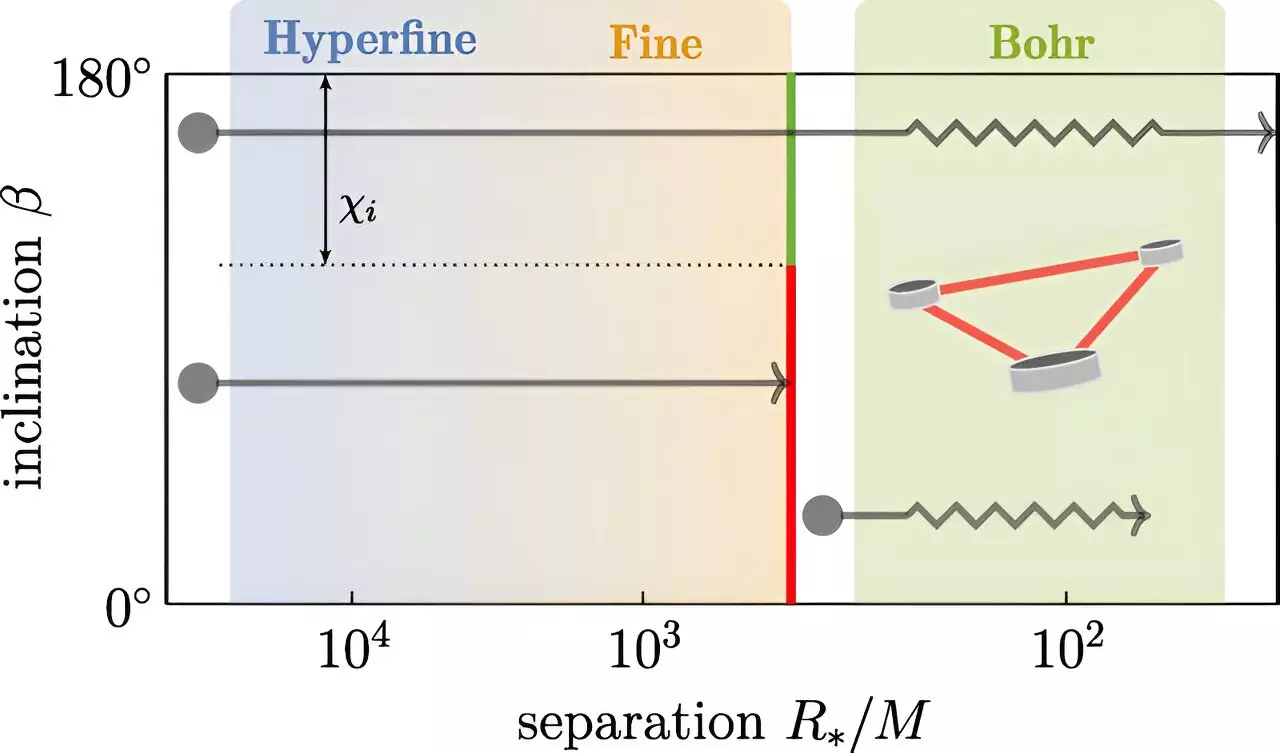A groundbreaking study from researchers at the University of Amsterdam and the Niels Bohr Institute in Copenhagen promises to expand our understanding of the Universe through the lens of merging black holes. Published in **Physical Review Letters**, the findings suggest that detailed observations of these cosmic phenomena could illuminate the existence of potentially new particles. This multidisciplinary research not only builds on groundbreaking advancements over the past six years but also proposes innovative methods to detect these elusive entities which have long puzzled scientists.
At the heart of this research lies the concept of gravitational waves, ripples in spacetime created when black holes collide. These waves carry intricate information about the dynamics of the merging black holes, including the shape and evolution of their orbits. The research team—including physicists Giovanni Maria Tomaselli, Gianfranco Bertone, and former UvA graduate Thomas Spieksma—applies advanced observational techniques to decode the information encoded in these gravitational waves. What’s novel about their approach is how they link gravitational wave signals to the possible existence of new particles, specifically ultralight bosons.
A crucial aspect of this study is the concept of black hole superradiance—an intriguing mechanism where a fast-rotating black hole can lose energy by converting part of its mass into a particle cloud surrounding it. This scenario resembles the analogy of a “gravitational atom,” where a black hole acts like a nucleus, while a cloud of ultralight bosons behaves similarly to an electron cloud. Superradiance is particularly effective when the associated particles are significantly lighter than those typically found in current particle experiments. This distinction presents an extraordinary opportunity to explore particles that may bridge gaps in our understanding of astrophysics, cosmology, and particle physics.
The researchers not only revisited but also built upon previous findings related to binary black holes and ultralight boson clouds. Among their crucial discoveries are phenomena akin to those found in atomic physics—resonant transitions and ionization. In resonant transitions, the particle cloud can shift states, akin to how electrons transition between energy levels in an atom. Ionization involves the ejection of part of the particle cloud, both of which produce telltale signs in emitted gravitational waves.
These findings enable scientists to map out the lifecycle of binary black holes, revealing new layers of complexity. Understanding the characteristic imprints these phenomena leave in gravitational wave signals could pave the way for unprecedented opportunities to uncover new, lightweight particles.
The research uncovers two primary outcomes in the evolutionary trajectory of binary black hole systems endowed with ultralight boson clouds. One intriguing possibility arises when the black holes and their corresponding particle clouds rotate in opposite directions. In this scenario, the particle cloud survives and exhibits ionization signatures detectable through gravitational wave observations. This outcome provides a tangible method for scientists to pursue the existence of these hypothetical ultralight particles.
Conversely, if the initial spin orientations do not favor survival, the resonant transitions deplete the cloud, unable to withstand the dynamical influences of the black holes. Instead, the binary system stabilizes at specific values of orbital eccentricity and inclination, measurable through gravitational wave signals. This nuanced understanding offers two distinct pathways for testing the presence of new particles.
As gravitational wave detection technology continues to advance, the implications of this research are far-reaching. The dual strategies outlined—detecting ionization effects and monitoring for anomalies in the predicted orbital parameters—form a robust framework for probing the existence of ultralight bosons. The future of astrophysics could hinge on these discoveries, addressing long-standing questions regarding the fundamental nature of particles and their interactions within the universe.
The confluence of gravitational wave astronomy and particle physics holds immense potential. As researchers delve deeper into the mysteries of merging black holes, the unfolding narrative may not only enhance our understanding of black holes themselves but also expand the fundamental concepts governing the universe, beckoning a new era in scientific exploration.


Leave a Reply